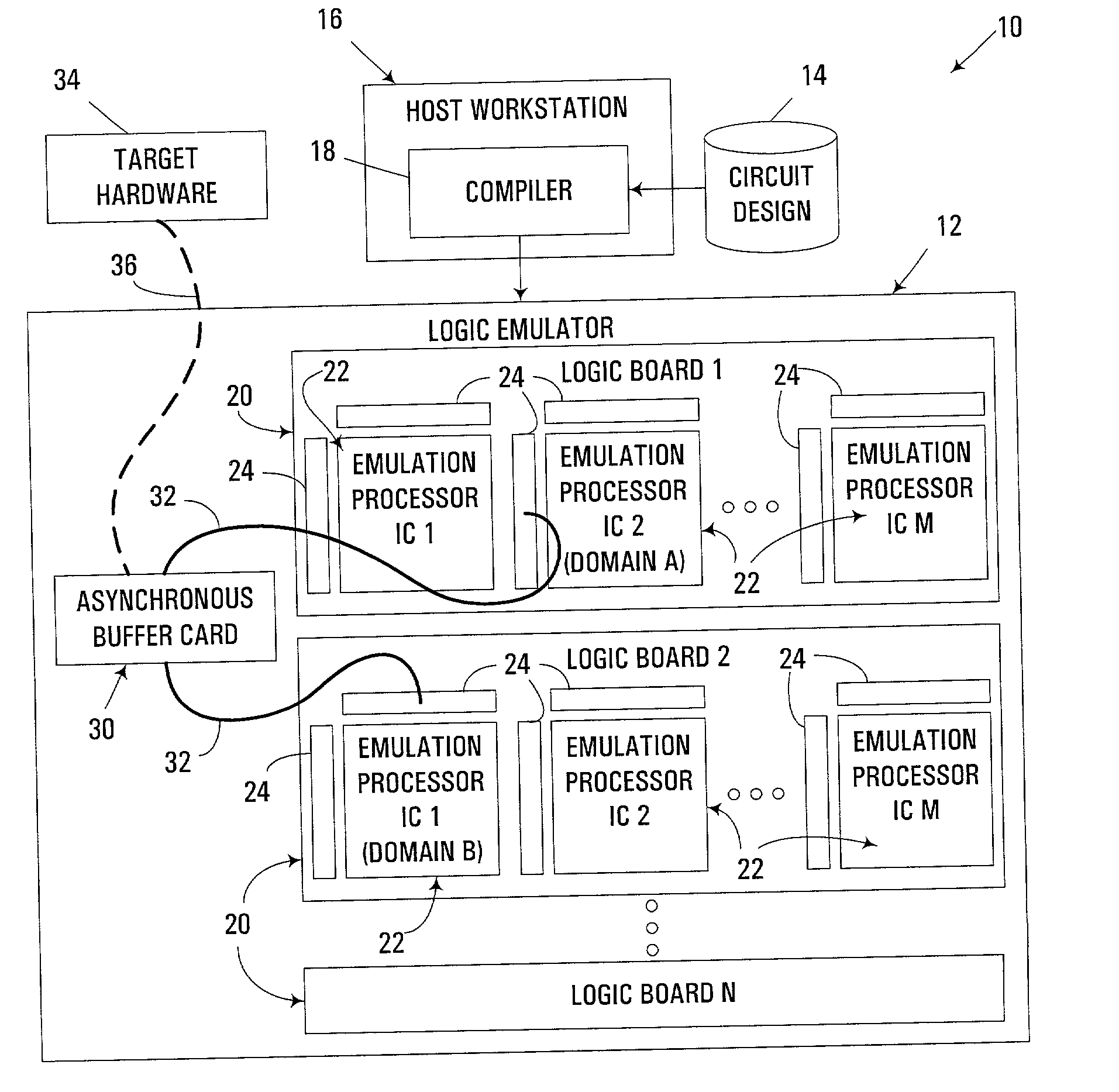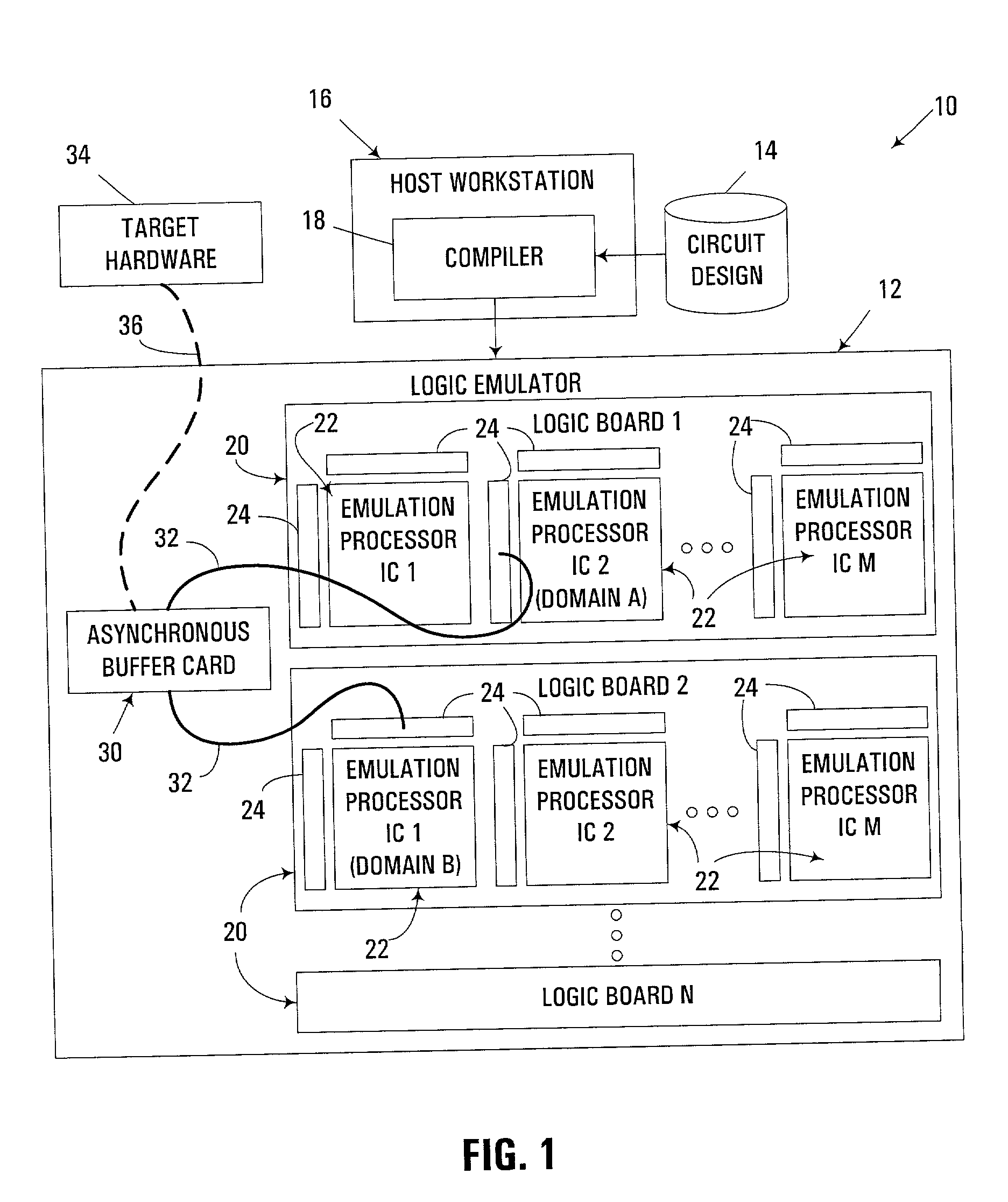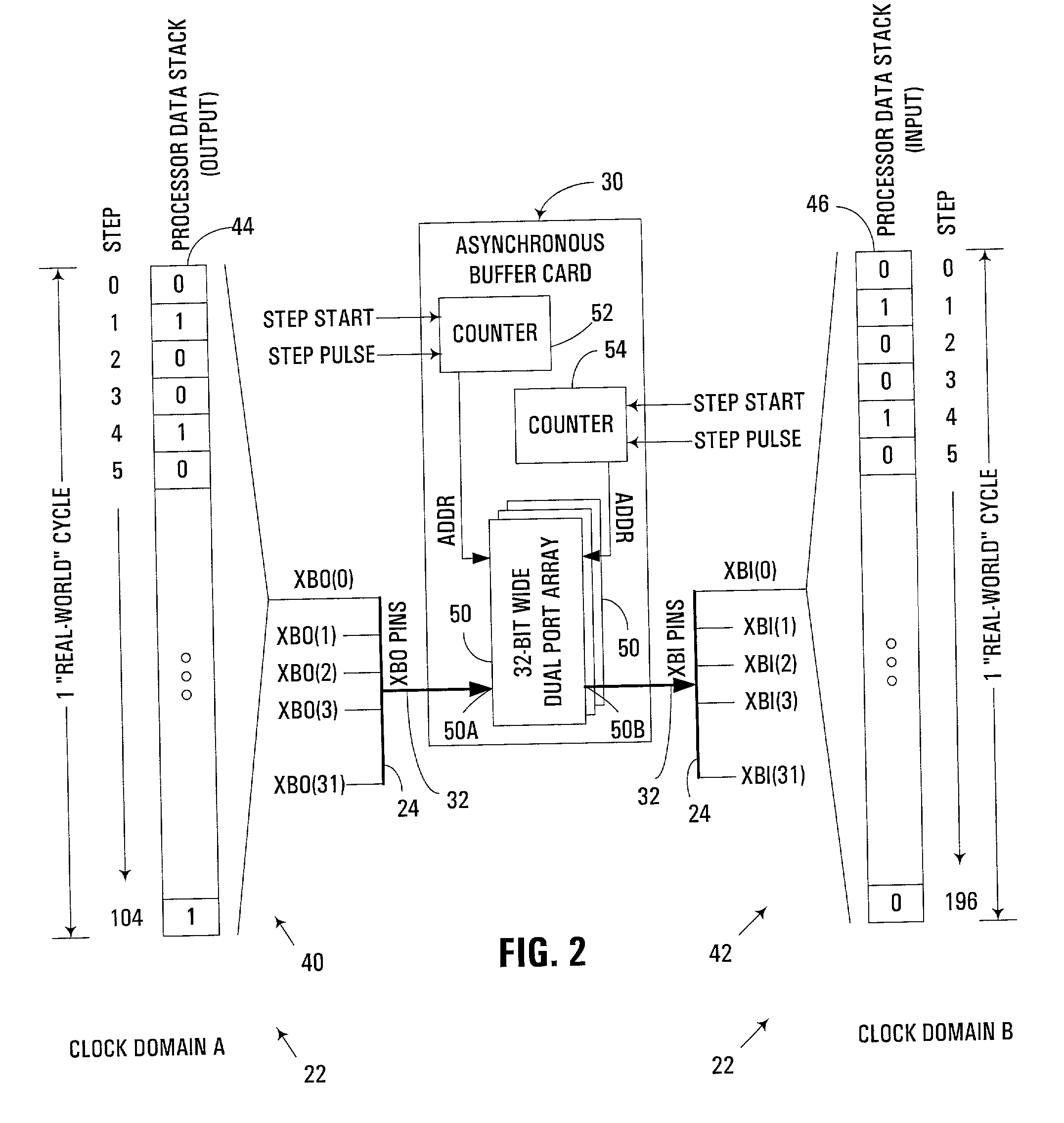Time-multiplexing data between asynchronous clock domains within cycle simulation and emulation environments
- Summary
- Abstract
- Description
- Claims
- Application Information
AI Technical Summary
Benefits of technology
Problems solved by technology
Method used
Image
Examples
Embodiment Construction
[0022] Turning to the Drawings, wherein like numbers denote like parts throughout the several views, FIG. 1 illustrates a hardware-based logic emulation system 10 consistent with the invention. System 10 includes a hardware-based logic emulator 12, which is used to emulate a circuit design stored in a database 14. The circuit design is typically designed and modeled in a high-level hardware definition language such as Verilog or VHDL. The logic emulator 12 operates on a gate-level compiled model of the circuit design, which may be generated, for example, on a host workstation 16 that executes a compiler 18. The host workstation may also be used to design or perform other Electronic Design Automation (EDA) steps during the development, testing, verification and / or validation of a circuit design.
[0023] Logic emulator 12 may be based upon any number of suitable hardware-based logic emulation or simulation environments, e.g., the ET3.5 emulation environment from International Business M...
PUM
 Login to View More
Login to View More Abstract
Description
Claims
Application Information
 Login to View More
Login to View More - R&D
- Intellectual Property
- Life Sciences
- Materials
- Tech Scout
- Unparalleled Data Quality
- Higher Quality Content
- 60% Fewer Hallucinations
Browse by: Latest US Patents, China's latest patents, Technical Efficacy Thesaurus, Application Domain, Technology Topic, Popular Technical Reports.
© 2025 PatSnap. All rights reserved.Legal|Privacy policy|Modern Slavery Act Transparency Statement|Sitemap|About US| Contact US: help@patsnap.com



